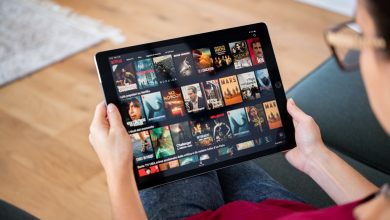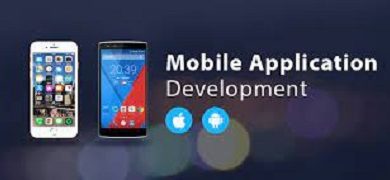Ultimate Healthcare Mobile App Development Checklist

Over the last two years, the entire world has realized how crucial healthcare mobile applications are. What started in fitness has burgeoned into a massive healthcare mobile app development market.
What’s more, investors speculate that the telemedicine app market alone will grow to $18 billion within the next five years.
The checklist below will guide your development process while you build better, safer applications supporting people in their personal health journeys.
Key Points
- Start with only the need-to-haves for solving the pain point in the first iteration
- Validate your ideas before starting development
- User-centered design will dominate market share every time
- Know your government regulations
- Get constant feedback from users and iterate
1) Identify a Pain Point
There are anywhere from 40,000 to 100,000 healthcare applications available, depending on which source you cite. That makes standing out tricky unless you niche down until you’re one of the only options in a specific market.
Many new mHealth (aka mobile health) companies jump into a great idea without first figuring out what it solves or who benefits.
Start there. While we always advocate upgrading from legacy systems, it shouldn’t be a pet project. Upgrading from legacy systems might mean migrating data to secure cloud storage to improve delays between ordering tests, getting lab results, and sharing findings with patients.
That’s a pain point. The delay hurts efficiency and the user experience. Nobody likes waiting, after all.
If you’re leaning towards a health app (rather than a medical app), what are you solving that one of the thousand other apps on the market doesn’t solve?
2) Find Your Target Audience
Determining your ideal user is a two-step process.
Having one or several ideal customer personas is crucial to your mobile app development process. It provides the foundation for your market research, UI design, and marketing team.
Once you have a pain point that you can solve with your mobile app, then you can move into developing and testing your target audience.
In the initial process, you probably noted who you were talking to about pain points. They create an excellent base for your ideal customer personas. Start with their age, occupations, gender, income level, and other relevant demographics for your pain point and solution.
Avoid the temptation to say that everyone is your audience. It may be true, but you have to start with specific demographics – ideally, the users who are actively seeking a solution to the problem you’re solving.
3) Market Research & Validation
Validating your idea is another point not to skip in your mobile app development process. You have your pain, you have the solution, and you know who to target.
It’s time for a real-world test drive of your concept. Put aside some cash for ad spend or time to talk to real ideal customers about would they use your app.
Ad spend eliminates biases because people, in person, tend to be supportive of new ideas, even to strangers. People looking at ads ignore them to the best of their ability – unless they solve an immediate pain.
Next, we’ll get into the meat of the development process. It can be tempting to skip these first three steps, which are scary for many people. Reputation, pride, money, and fear all come into play.
4) Start with User-Centered Design
When you get to this point, you have a choice – develop your app in-house or hire a mobile app development company. In this case, one that specializes in healthcare applications.
Large corporations may have the resources to hire an in-house team within their IT department. Entrepreneurs may be more interested in writing the code themselves.
But it’s often the most efficient use of time and avcılar escort money to hire a specialist company. The developer specializing in mHealth applications will keep track of the government regulations for your target countries. They have experience, and can advise you on what works well based on that experience.
No matter which path you take, the user comes first.
Your ideal customer personas will come in handy when deciding what might be the best user experience for your app.
Your UI should always be intuitive. But what intuitive means to a 20-year-old who grew up on cell phone games and apps will have a different meaning than a 70-year-old who only uses their mobile phone for Facebook and texting their children.
We’re seeing several big trends emerge with recent mobile health apps and updates. Most of these revolve around improving the user experience.
They include:
- Gamification
- Remote services for seniors
- Equipment integration (internet of things)
- In-app waiting rooms (for clinics)
- Telemedicine additions
- Machine learning and AI
- Preventative care and medicine
- Interoperability
That last one is especially crucial for teams, particularly in hospital settings where the billing might be different than the labs, which might be different than setting an appointment. There is a good chance that you might need a web app developed for medical professional users.
If your app is patient-facing, they’ll want everything in one place, including a telemedicine option. If your app is for medical professionals, they may not need access to every feature, but it will need to work within the clinic’s existing computer systems.
5) Monetization Model
How is your app going to make a profit or improve your business?
Once you have a few designs sketched out for navigating the app that will solve a problem for the user, it has to make financial sense.
If it’s for better efficiency or practice, then calculate the like ROI for time and money saved using the new app over old systems.
For patient-focused apps, you might consider ad revenue, subscription plans, freemium content, or digital product sales.
It will depend again on your solution to the pain point and your ideal customer.
6) Don’t Skip the Regulations
One of the top reasons mHealth apps fail is because they don’t read the fine print of government regulations on everything from the protection of medical information to advertising.
The other top reasons for app failure are:
- Bad user experience design
- API security problems
- Lack of feedback from the medical or patients using the app
Here’s what you should know:
United States
- HIPAA (Health Insurance Portability and Accountability Act) – controls the confidentiality of all protected health information
- CCPA – requires informing the client about collected data, providing a free report on collected data upon request, and deleting collected data upon request
- NIST – a framework for protecting user data in medical apps
European Union
- GDPR – rules governing protecting confidential information
Canada
- PIPEDA – data regulations (similar to GDPR)
These are all too long to explain here, but your mobile app development company will know how to create within all of the above regulations.
7) Minimum Viable Product
Cutting your nice-to-haves back to need-to-haves will increase your development speed.
Plus, starting with only the need-to-haves will let you get real user feedback, but that’s the next step.
Recall that two of the biggest reasons for failure were disappointing (or worse) user experience and security problems?
You can avoid those while developing your MVP by constantly testing the user interface, security, and any third-party integration you plan on building.
It’s also wise to work with your development team at this phase to pave the way for any extra features you’ll want to add later. Surprisingly, some seemingly small features can turn into tricky, time-consuming updates.
8) Analyze & Iterate
Immediate user feedback will help push your health app’s market share. If it’s to improve workflow, it will make your team feel listened to and, by extension, adoption easier.
It might be minor tweaks to the UI. It could be just about anything. Any bugs should be tested out during the MVP development phase.
Check all of the Boxes with RD Global
Our team at RD Global has experience with large-scale mobile app development across industries, including insurtech, finance, retail, and manufacturing, to name a few. Our focus on user experience and security helps our clients focus on finding just the right solution for their patients and teams.
Reach out today to see if we could make a good team for your ideas.




